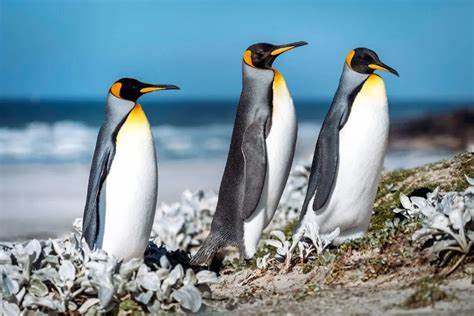The mysterious White Continent, with its multi-colored ice caps, glistening glaciers and towering snow-capped mountains, offers unparalleled scenery and photographic opportunities. Enormous numbers of penguins, whales, seals and seabirds congregate in the food-rich waters along the Antarctic and sub-Antarctic shores. A true adventurers destination, an Antarctic trip offers the opportunity for polar diving, hiking, camping, kayaking, zodiac cruising and snowshoeing.
Diving
During an Antarctic dive expedition you may observe penguins from under the surface as well as sea lions and perhaps even leopard seals. The Falkland Islands are rich with krill (which is consumed by many species) and therefore interesting for finding marine wildlife.
The dive sites will vary from shallow ice diving, diving along a wall, from a beach or from the zodiac. The maximum depth is around 20 meters / 60 feet. The combination of sunlight and the often extraordinary formations of ice causes an overwhelming, ever-changing spectrum of colors, with a fantastic variety of shades and brilliance. While snorkeling or diving along the ice-floes, you will be amazed and never forget these deep blue colors.
Diving in Antarctica does not only offer ice, but also an interesting marine life, such as kelp walls, sea-snails, crabs, sea butterflies, various Antarctic fish, shrubby horse-tails, jelly-fishes, sea-hedgehogs, starfishes, krill and giant isopods. You may have the possibility to snorkel or dive with Fur seals, Leopard seals and Penguins.
Getting There
Most people will fly through Buenos Aires, the capital of Argentina. International flights arrive into Ezeiza Airport, and you will change to regional airport Jorge Newbery for your flight to Ushuaia.
Ushuaia is the main town of the island of Tiera del Fuego in Argentina and serves as embarkation/disembarkation port for Antarctic passengers. It is located on the island of Tiera del Fuego in Argentina and is the southernmost city of the world. It was originally founded by British missionaries in 1870 as a refuge for the indigenous people of Tiera del Fuego, the Yámana.





